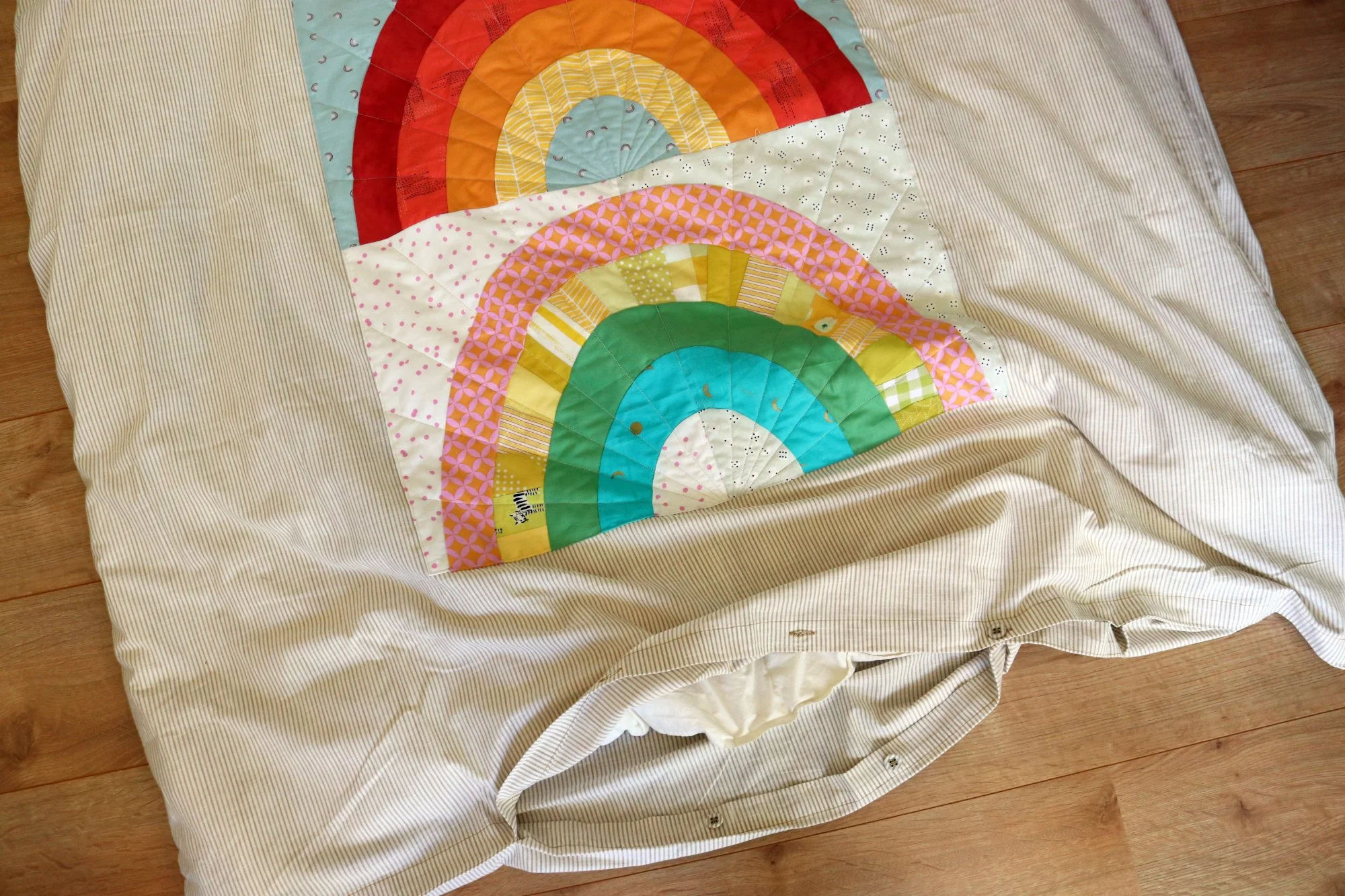Rainbow Patchwork duvet covers
At last, they are finished!
Two rainbow patchwork duvet covers are ready to be loved and cuddled. I made two of them, since duvets need to be washed much more than quilts. They are usually used without sheets, which is what makes them so handy for Elora’s future loft bed. She won’t have to struggle to make a bed with multiple layers up there. Yay!
Although we have just assembled her loft bed at the new house, we are still living at the old house and will be for a few more months. That’s why these photos are in Elora’s current attic bedroom. After we move and her new room is finished, I will show you around there as well. But I do love how it looks in her current room, and you can bet she is happy to have rainbows on her bed.
In fact, she has already slept under this duvet for two nights. The top edge is getting crinkly and wrinkly from use, which is certainly different than a quilt. Well, we are all getting used to the change from quilt to duvet. The first night Elora was concerned with how open the duvet is at the sides! It doesn’t tuck into the bed at the sides, only at the bottom. A totally new feeling, I understand.
So, how about some construction notes? I purchased Ikea duvet covers called Bergpalm and opened them on three edges (the bottom and both sides). After sewing my rainbow blocks (Sunshowers pattern from Megan Collins) into a column, I pressed the raw edges of the patchwork under by 1/2”. Then I cut batting to the same size. I lay the duvet out flat on the floor and centered the patchwork column on it with the batting layered underneath.
Once securely pinned in place, I took the whole thing to the longarm, where I quilted straight lines in a sunburst pattern on each block. Back off the machine, I sewed around the patchwork applique to attach the edges neatly. Then it was time to reassemble the duvet seams!
Each new step felt a little daunting, which explains my slow progress. But overall, it went smoothly and was certainly easier and cheaper than sewing a duvet from scratch myself.
As one final, practical touch, I sewed a large rectangle of knit scrap fabric to the lower edge of the duvet. This piece tucks in under the mattress at the bottom of the bed, keeping everything securely in place. So far, it’s working great!
In case you are wondering, the lovely color on the wall is called Vardo by Farrow and Ball. I will miss this dreamy shade of teal! Everything has looked great with it.
Making something different takes more time and energy than making something familiar. Although finishing this bedding as duvet covers instead of as a quilt wasn’t actually difficult, it was taxing. I am looking forward to sewing a quilt again!










